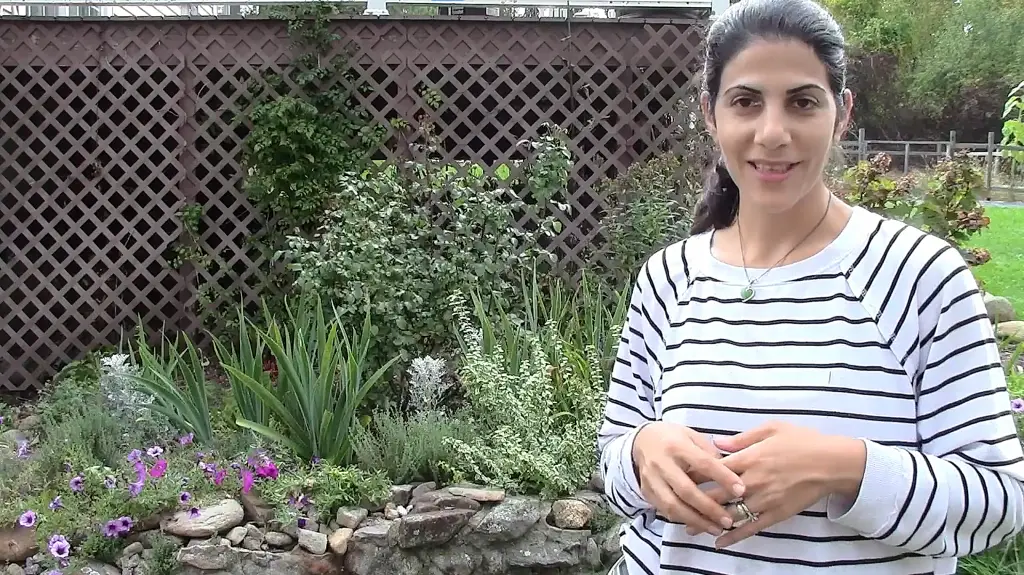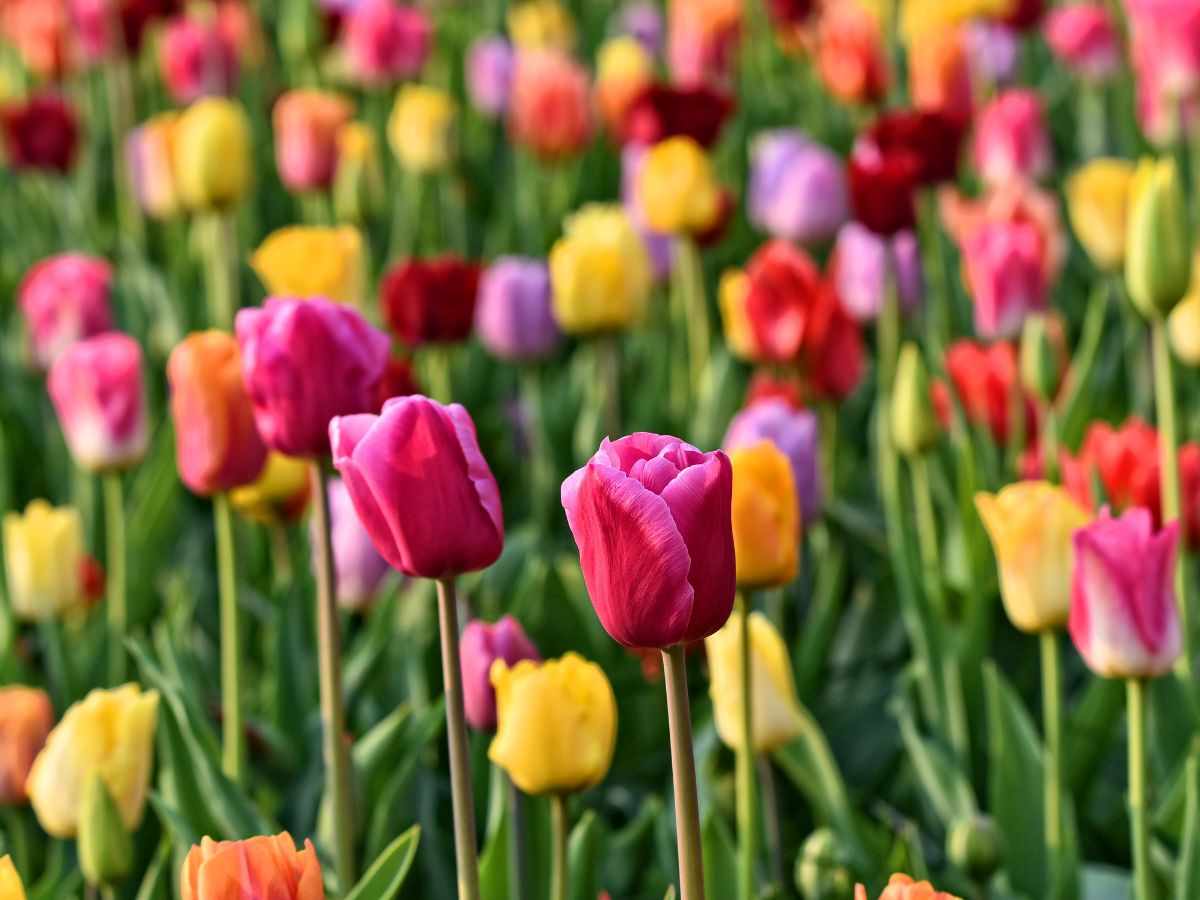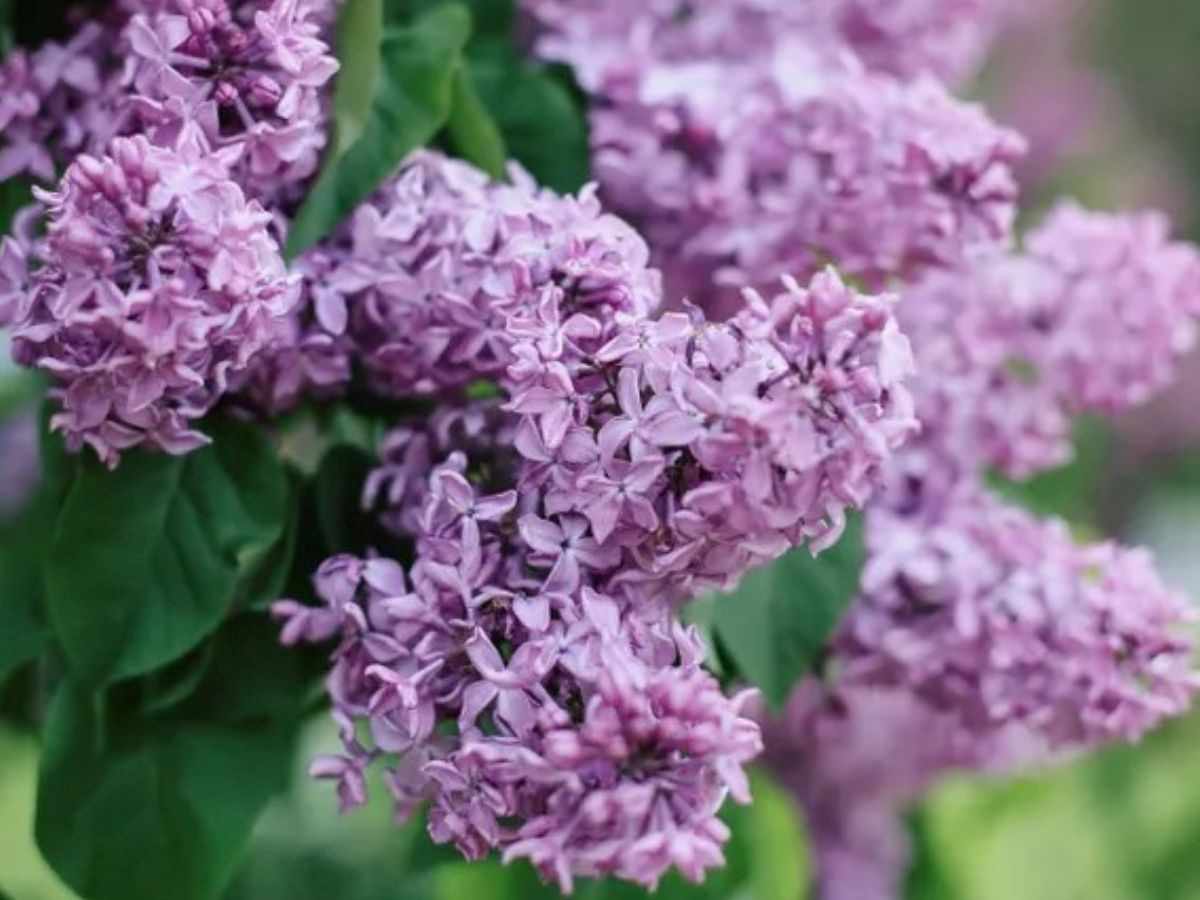Fall garden clean up might seem like such an overwhelming task, but I can assure you, if you fallow these Four simple garden cleanup tips, it will be a breeze.
- Removing bloom stalks off heavily self seeding plants
- Cleaning up pest ridden or diseased foliage
- Getting rid of weeds, especially invasive weeds
- Clearing up leaves from crucial areas
GARDEN CLEAN UP TOOLS
Before you can start with your fall garden clean up, here are some essential tools that you’ll need to aide you with that job, and hopefully make it easier.
- Pruning shears
- Hedge Shears
- Hori Knife
- Shovel
- Rake
- Leaf Blower
- Garden Cart
- Gardening Gloves
- Garden Hoe
FALL GARDEN CLEAN UP TIP #1
Removing bloom stalks off heavily self seeding plants
The first reason why you would want to do a fall cleanup rather than spring cleanup is if you have plants that readily seed themselves, and you want to prevent them from seeding themselves and spreading all over your garden.
An example of plants that reseed themselves very vigorously would be the common yarrow, chives, queen Anne’s lace, columbine, rudbeckia, and many other perennial and biennial plants.
On the other hand, if you want your plants to reseed themselves, then this step might be unnecessary to you. Or you might want to do selective removing of the bloom stalks in areas where you do not want the plants to reseed themselves.
I love rudbeckias (also known as coneflower or black-eyed Susan), and tall phlox. These are plants that I allow to reseed as heavily as they wish.
We have a lot of land, and I am creating a lot of new flower beds that will need plants to be filled. Having these free and beautiful plants is an excellent way for me to quickly fill my flower beds until I can buy the plants that I also would like to have in there.
To remove the bloom stalks of most plants, use your pruning shears, go down to where the bloom stalk touches the first set of leaves and cut it at that point. You can then place it in a bag, and toss it in the trash, or you can place it in a compost pile that you are not planning on using right away.
If you do put the bloom stalks of the heavily reseeding plants in your compost pile, you will need to actively turn that compost pile about once a day in order to get it hot. You also might need to water the compost pile if it gets a bit dry.
A hot compost pile, will most likely kill most of the seeds in it, but just for the sake of being cautious, try not to use that pile right away. You might want to wait on it for a few seasons before using it.
Keeping the bloom stalks of non invasive plants for the wildlife
Having a tidy garden is a tempting thought, but have you also taken into consideration the wildlife around you?
It is a lot simpler to just cut everything off in the fall, remove all the dead foliage, plant material, branches, and leaves, but some of these things can be beneficial to the wildlife in our area.
Some things to consider when doing fall garden cleanup is to leave some bloom stalks of non-highly invasive plants for the wildlife to feed on.
Many birds, squirrels, chipmunks, and more depend on the seed heads of many flowers for food source during the winter.
Some of these plants that wildlife feeds on are coneflowers, hollyhocks, rudbeckia, sunflowers, cosmos, zinnias, and much more.

FALL GARDEN CLEAN UP TIP #2
Cleaning up pest ridden or diseased foliage
While leaving some plant material is necessary for the wildlife, getting rid of pest-ridden or diseased foliage is equally as important.
If you were experiencing a pest problem on your plants, the best thing to do would be to remove the foliage, place it into a bag, and toss it in the trash.
Once you have removed the dead foliage, you can sprinkle some diatomaceous earth, or spray neem oil on the affected area.
It is important to note that diatomaceous earth works only in dry conditions. So if your area gets a lot of rain, consider using neem oil instead. Both are an organic choice.
If your plants have experienced a disease problem, remove all infected foliage and spray with a disinfectant plant spray. I use 1 part 35% hydrogen peroxide to 10 parts water.
Bag and throw away any infected foliage into the trash. Do NOT put any infected foliage or plants into your compost pile because you would be spreading the problem across your garden.
If the plant is un-recoupable, bag and toss into the trash.
To remove any foliage, you can use hedging shears. Make sure to disinfect any tools your using by spraying with some alcohol.
Reasons to not cleanup healthy plant foliage
While cleaning up pest ridden or diseased foliage, it is also important to leave the healthy foliage.
- Insulating the crown of plants from severe cold temperatures.
- protecting the habitat of beneficial insects that like to burrow under foliage or dead leaves for extra insulation.
FALL GARDEN CLEAN UP TIP #3
Getting rid of weeds, especially invasive weeds
Weeding is something that should be done throughout the growing season. However, when plant foliage takes over a flower or a vegetable bed, sometimes weeds may go unnoticed.
Once you have cleaned up your flower or vegetable bed, you might notice some weeds that you haven’t noticed before.
To clean up these weeds, you will need to use either hori knife, a garden hoe, or a shovel depending on the type and the size of the weeds that you have encountered.
Before we talk about the tools to use for the type of weeds, let’s talk about the types of weeds.
Types of Weeds
- Annual weeds
- biennial weeds
- perennial weeds
- invasive weeds
Annual Weeds
Annual weeds are weeds that fully die once fall or winter arrive. The only way that these weeds can spread themselves is through seeds.
Biennial Weeds
These are weeds that live for two years and fully die back on the second year. Usually, in the first year of their life, they are concerned about root and foliage production.
In the second year, biennial weeds send out their bloom stalks. The bloom stalks eventually turn into seed heads.
Perennial Weeds
Perennial weeds are weeds that will continue to live on year after year without dying. They are usually weeds that spread by rhizomes and seeds.
Invasive Weeds
Generally speaking, most weeds are invasive. The most invasive weeds of all are the perennial weeds.
Perennial weeds tend to be the most invasive weeds not only because they continue to live year after year, but also because of the way how they spread through their rhizomes and seeds. These would be the weeds you would want to get rid of first.
An example of perennial weeds is creeping Charly and sheep sorrel.
Most weeds will spread themselves vigorously through reseeding. So it is important to remove any weeds that you may encounter on your fall cleanup journey.
Garden Clean Up Tools For Weeds
- For weeds with long tap roots, use a hori knife or a garden tool with a long thin blade.
- Battling against many small weeds? Use a garden hoe to scrape up the top few inches of the soil to up root or behead weed seedlings.
- Facing invasive weeds that spread by rhizomes, or weeds with a large root system? Use a regular shovel to loosen up the soil around and underneath the roots. Gently unearth the roots trying not to break them, especially if you are battling against rhizome spreading weeds.

FALL GARDEN CLEAN UP TIP #4
Clearing up leaves from crucial areas
When we are talking about leaves, I generally imagine a lawn covered with the beautiful colors of fall from all the fallen leaves.
While this is a beautiful sight to see leaves laying down over the grass, this can be very unhealthy for your lawn.
The dead leaves will compact creating a carpet like effect. This carpet like effect will suffocate the grass by stopping it from seeing the sunlight.
The inability of the grass to see the sunlight will cause it to dye causing dead patches in your lawn.
Also when spring comes, the once beautiful fall leaves will no longer appear beautiful. By that time, they would be black and slimy because they have begun their process of decomposing.
So make sure to include cleaning the leaves of your lawn into your fall garden checklist.
What to do with healthy leaves from fall garden cleanup
If the leaves that you have collected come from healthy uninfected trees, you can mulch them up using a lawn mower or a leaf mulcher.
Once they have been mulched up, you can
- cover your vegetable beds with them
- create a compost pile using the mulched leaves and other organic material
- mulch your flower beds with them
- or take them to your local dump. They usually have a dump pile for organic matter.
What to do with unhealthy leaves from a fall garden clean up
If the trees that you have collected the leaves from underneath were facing any disease, or you even suspect they did
- place the leaves into trash bags
- Toss the trash bags filled with leaves into the trash
Garden clean up tools for cleaning up leaves
To clean leaves up, you might need a
- rake
- leaf scoops to help pick up leaves
- leaf blower
- lawn mower or leaf mulcher to shred the leaves
Caring for your gardening tools after fall garden cleanup of diseased plants
Whether you are cleaning diseased plants or not, you should always clean your gardening tools.
However, if you have just cleaned an infected plant with your gardening tool, and plan on cleaning a healthy plant with the same tool, make sure to clean your tool before moving on.
Tools can carry diseases and pests if not cleaned after each use.
To clean your tools, you can dip a cotton ball with some rubbing alcohol, or 90% isopropyl alcohol, rub the part where the plants touched the tool with the alcohol dipped cotton ball, and you should be good to go.
Or, you can spray the tool with some rubbing alcohol or 90% isopropyl alcohol. Alcohol is very effective at killing diseases, bacteria, and pests.
MORE ON GARDENING
7 Reasons Why You Should Make A Temporary Patio
AMAZING GLUTEN FREE RECIPES
Gluten Free Vanilla Cake Mediterranean
Disclosure: Some of the links in this post are “affiliate links”. This means if you click on a link and purchase the item, I will get an affiliate commission. It will not cost you any extra money, but it will help me pay for this website, and it will help me to keep providing you with helpful articles such as this one. I only post links to products that I personally use and love, or to products that I wish I could have, and that could be of value to you. The information that I provide you with, my blog, videos, and many resources are free.





Be the first to reply